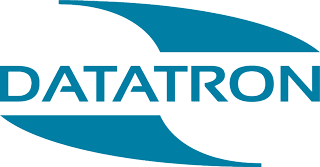Information compliance and improved business processes: how they work together
Modern businesses must juggle a number of goals and priorities. You want to consistently improve business processes to stand out in your industry. But, at the same time, you must also consider information security challenges, like the GDPR.
With 70 percent of UK companies struggling to address compliance, this is naturally a very high priority. So, sometimes it may feel like you can only choose one or the other: process improvement or compliance.
But what if a single tool could improve your processes and information compliance? Well, with a document management system, you really can achieve both.
How does a document management system improve business processes?
A document management system stores files in a secure but structured format where you can access, manage and share data.
What’s more, with the right software, you can also implement e-forms and automated workflows that allow you to automate all aspects of business processes.
But let’s look deeper into how this can improve your business efficiency.
Provide a single source of truth for business data
Data quality issues cost organisations between 10 to 30 percent of their revenue. They can also result in other indirect costs, such as poor (or slow) decision-making or damage to your company’s reputation.
A document management system reduces quality issues by standardising form-filling, eradicating duplicates, and reducing human error. In addition, it consolidates your documents, policies, and forms into one location. This singular, un-siloed source aids transparency and can improve business decision-making.
Improves accessibility to business information
Hybrid working rose from 13 percent to 24 percent in 2022. As a result, sharing physical documents is a more complex feat.
A document management system allows access from anywhere at any time from any device. This means:
- Information is always available and searchable, even for remote workers.
- Policies are always available to provide on-demand guidance and transparency.
- Teams, project leads or managers can view the status of a process with ease.
For the modern workforce, this accessibility naturally leads to improved transparency and efficiency.
Enables collaboration on documents
Ease of communication is essential for ‘good collaboration’, according to a Slack survey.
A document management system allows your employees to work on documents together in real-time. It ensures knowledge sharing across generations of workers, as knowledge is recorded - rather than lost - when workers leave.
Enables automated workflows
Sixty percent of UK employees feel they spent at least half a day every week wasting time on required tasks. This included administrative items.
You can reduce this time by using automated workflows that take repeatable tasks and eliminate the need for human intervention. This includes automated naming conventions, file types, or form field input. But it can also extend to gathering multiple approval signatures on a single form, such as leave requests.
How does a document management system improve information compliance?
A document management system also boasts features like built-in access controls, dependable security for information sharing, and automated retention settings. It makes meeting information compliance all the easier.
Authorised access
Insiders cause almost 20 percent of global data breaches. While some breaches occur due to mistakes or negligence, malicious insiders use business information for personal gain. This makes it important for every business to limit its exposure.
With a document management system, you can grant access to specific roles using identity and access management (IAM) practices. This means your employees aren’t bogged down with irrelevant information. Nor are they privy to the documents for which they have no business need. This can reduce the likelihood of an accidental (or malicious) breach.
Secure transfer of information
Research shows consumers are most comfortable sharing data with healthcare and financial services industries. However, no industry reached a trust rating of 50 percent or more.
Breaches cause consumer trust to wane, so it’s vital you try to avoid them.
Document digitisation removes the physical security risks that come with paper. Additionally, your system should protect your information with anti-tampering capabilities and automated backups.
Eliminates duplicate or outdated documents
GDPR rules require information to be kept only as long as is necessary for the associated task. Maintaining this manually means staff must remember the rules and spend time sorting through information. It leaves room for mistakes.
A document management system manages retention for you through automation. It also ensures data quality and accuracy by identifying duplicate records and consolidating them into a master document.
Building a better business with a document management system
Your business needs to improve process efficiencies to remain competitive. At the same time, you must continuously bolster information compliance to retain customer trust.
The right document management system removes the tension between those goals. It does this with efficient document storage, automated processes, and built-in security and compliance.
Our client Newcastle Upon Tyne NHS Foundation Trust, benefitted from both worlds. As a large healthcare organisation, the Trust naturally manages and shares a lot of sensitive documents across its sites. We digitised these documents to increase both the efficiency and security of sharing records.
Likewise, another NHS Trust client needed a better process to address its cumbersome pregnancy risk assessmentprocess. We were able to address their pain points of lost documents and inconsistency, all while increasing transparency and ensuring regulatory compliance.
For more information about how improved business processes and information compliance come together in the right tool with the right partner, reach out to our team.

